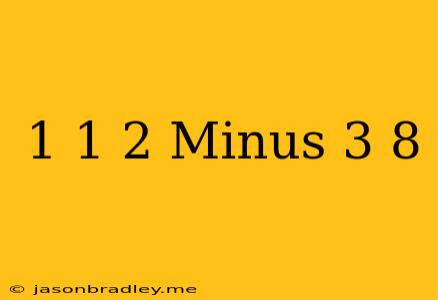Solving 1 1/2 - 3/8
This article will guide you through the steps of solving the subtraction problem 1 1/2 - 3/8.
Understanding Mixed Numbers and Fractions
Before we begin, let's clarify the terms:
- Mixed number: A combination of a whole number and a fraction, like 1 1/2.
- Fraction: A number representing a part of a whole, like 3/8.
Converting Mixed Numbers to Fractions
To solve the problem, we need to convert the mixed number (1 1/2) into a fraction:
- Multiply the whole number (1) by the denominator of the fraction (2): 1 * 2 = 2
- Add the numerator (1) to the result: 2 + 1 = 3
- Keep the same denominator (2): 3/2
Now our problem is: 3/2 - 3/8
Finding a Common Denominator
To subtract fractions, they need to have the same denominator (bottom number). We can find the least common denominator (LCD) by finding the least common multiple of 2 and 8, which is 8.
- Convert 3/2 to a fraction with denominator 8: Multiply both numerator and denominator by 4: (3 * 4) / (2 * 4) = 12/8
Now our problem is: 12/8 - 3/8
Subtracting Fractions
Now that we have a common denominator, we can simply subtract the numerators:
- 12/8 - 3/8 = 9/8
Converting the Answer Back to a Mixed Number (Optional)
The answer 9/8 is an improper fraction (numerator is greater than the denominator). We can convert it back to a mixed number:
- Divide the numerator (9) by the denominator (8): 9 ÷ 8 = 1 with a remainder of 1
- The quotient (1) becomes the whole number of the mixed number.
- The remainder (1) becomes the numerator of the fraction.
- Keep the same denominator (8): 1 1/8
Therefore, 1 1/2 - 3/8 = 1 1/8.
